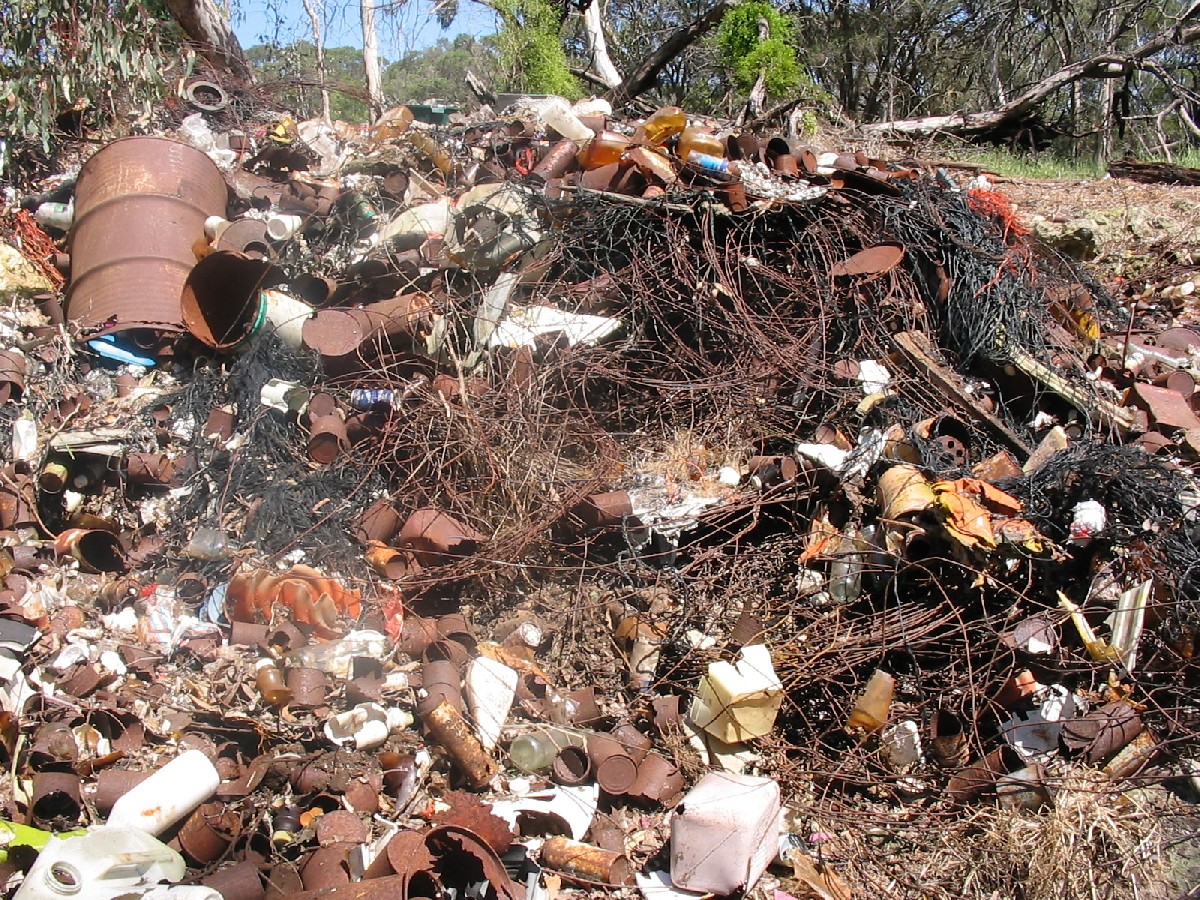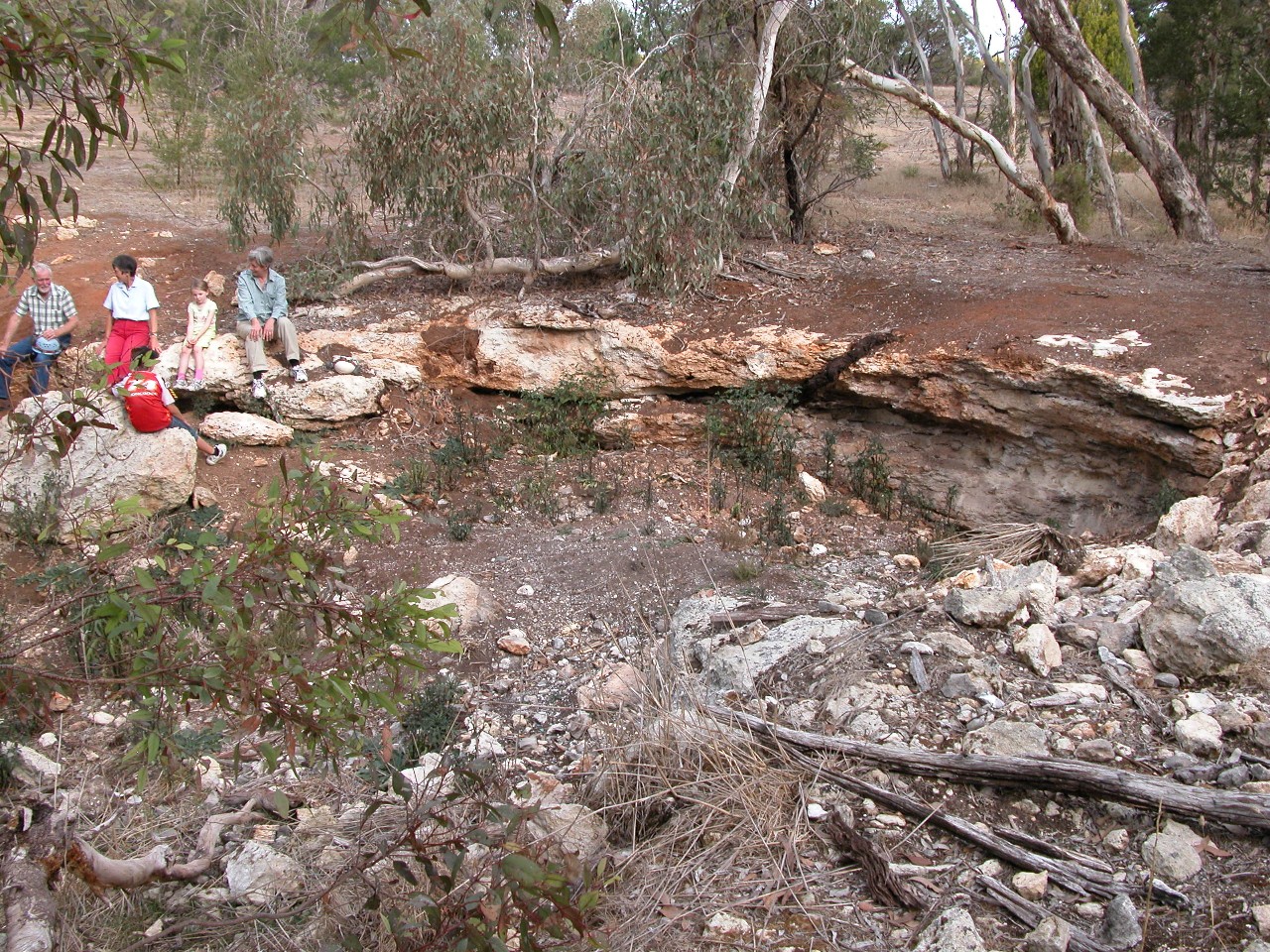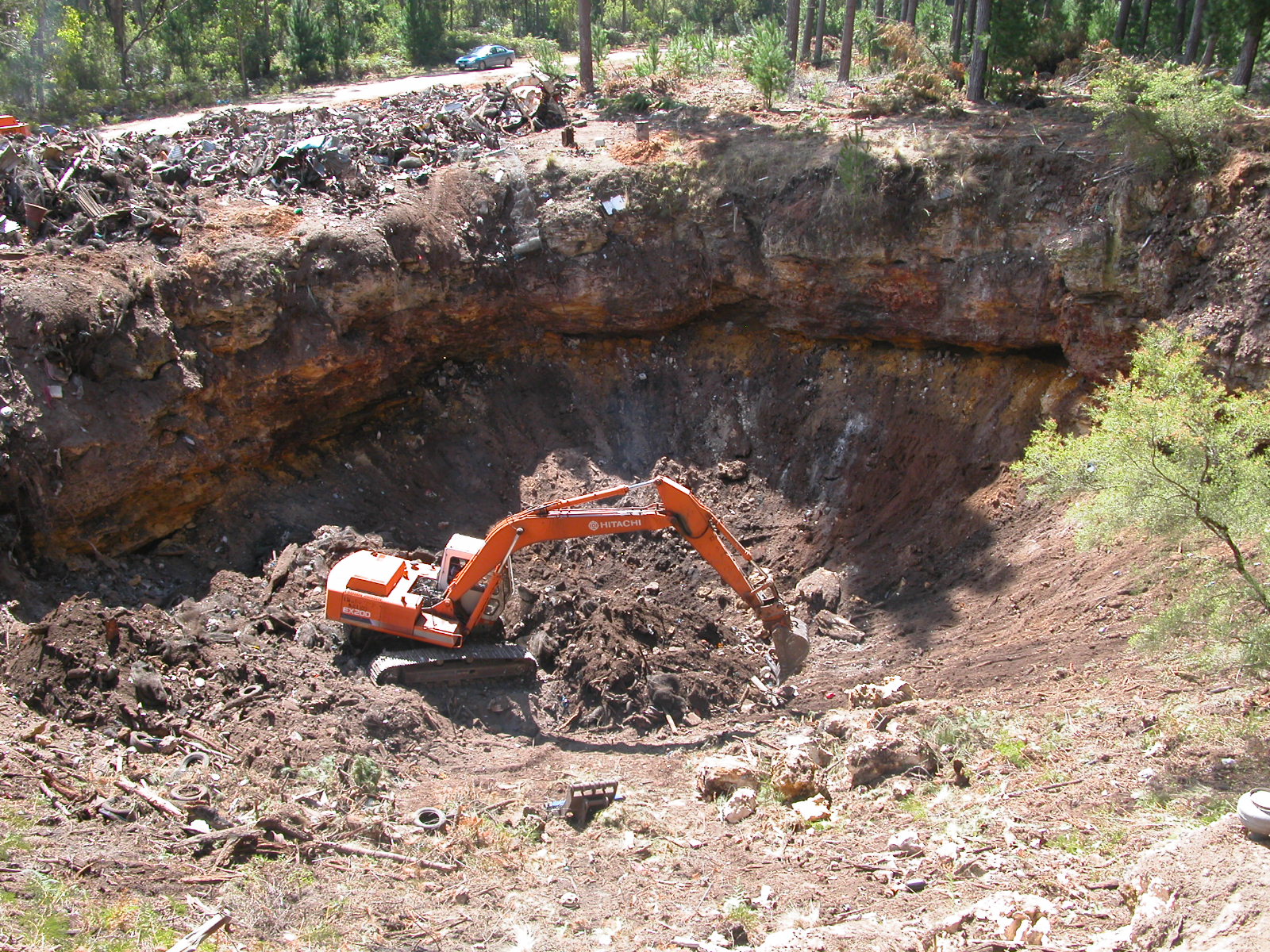Four karst features in the South East of South Australia have received a major facelift, thanks to the efforts of the South East Natural Resource Consultative Committee (SENRCC), the Friends of Naracoorte Caves, Green Corps and ForestrySA. Two parallel projects have come together to achieve some spectacular results, which will be promoted to the wider community with support from Zero Waste. It is hoped this will spur other landholders to become involved and may see other caves cleaned out.
Rubbish dumping in the caves and sinkholes has been going on for as long as European people have been in the South East. Impacts on aquatic fauna have been documented and cave-dwelling invertebrates also suffer (Hamilton-Smith & Eberhard 2000).
Several bat wintering caves have been rendered unsuitable by rubbish restricting access and the dumping of dairy waste directly into the cave. Not all has been negative, with groundwater protection legislation introduced in 1974 to prevent deliberate dumping into the aquifer and several caves cleaned up around Mount Gambier by Green Corps teams prior to this project.
Friends of Naracoorte Caves and Cave Park Cave
The Friends of Naracoorte Caves submitted a proposal to the Australian Government Envirofund titled "Restoration of wintering habitat for Southern Bentwing Bats" with the aims to clean rubbish out of Cave Park Cave and Joanna Bat Cave and establish native vegetation around the entrance to Cave Park Cave. Envirofund is a Commonwealth Government initiative that provides support for community projects from the Natural Heritage Trust.
Cave Park Cave is one of the most important Southern Bentwing Bat Miniopterus schreibersii bassanii wintering sites, with large numbers of bats often present during the cooler months. In 2001, approximately 15,000 bats were observed in the cave, almost half of the total population that breeds at Naracoorte's Bat Cave.
On 4 July 2004, the Friends group held a working bee to clean out Cave Park Cave. Twenty volunteers worked for most of the day to remove 15 200 litre drums of metal and glass as well as on old car body from the cave and an old fence that partially blocked the entrance. What looked like an almost impossible task was relatively easily achieved with a group of very enthusiastic people who worked quietly to avoid disturbing torpid bats only a few metres into the cave. An old Dryland Teatree Melaleuca lanceolata that screened the entrance has unfortunately now fallen into the cave entrance and will need to be removed to allow safe access to the cave again.
A corridor of native vegetation will be established around the cave entrance and to Mosquito Creek about 300 metres from the cave. This corridor will contribute to a larger project linking areas of remnant vegetation along the Caves Range and it is hoped this will provide protection around the cave and a flight path for bats to vegetation. Radio tracking observations by PhD student Chris Grant using a plane and tracking at night suggests the bats tend to follow vegetation when moving to feeding areas (Grant 2005).
This project would not have been possible without the support of the landholders, the Mencel family. Their cooperation and enthusiasm for the project has meant a larger area fenced for vegetation and several other corridors established on their farm.
Green Corps and Joanna Bat Cave
Cave Park Cave was also cleaned as part of the Australian Government Envirofund project, with the majority of work completed by a Green Corps team. Approximately 30 tonnes of rubbish, primarily wire and other assorted metal was removed from the cave. Removing a tank blocking the entrance to the cave proved rather challenging but the entrance is now completely free of restriction. In keeping with the aims of the project, the metal was recycled.
It is interesting to note Elery Hamilton-Smith regularly observed thousands of bats in this cave in the 1960s, yet in recent years no more than 30 had been seen at once.
Although human access was possible around the tank, it appeared to prevent bats from regularly using the cave.
Just a few weeks after the tank was removed in October, several hundred bats were seen in the cave. A recent inspection also found a large number of bats present, a heartening result.
The Rogers family who own the cave have been supportive of the cleanup of their cave and have undertaken to ensure it will be kept free of rubbish. Such a good result for conservation could not have been achieved without cooperative landowners.
 |
 |
 |
Joanna Bat Cave - before clean up |
Joanna Bat Cave - after clean up |
An excavator working in Car Park Cave |
Circuit Sinkhole and Sinkhole L128
The clean up of Circuit Sinkhole and Sinkhole L128 was managed through the SENRCC project "Rehabilitating Aquatic Groundwater Environments". SENRCC recognised that there was a large gap in community awareness as to the ecological value and potential threat to groundwater quality of the hundreds of caves and sinkholes that feature throughout the region.
SENRCC recognised the valuable previous efforts of the Friends of Naracoorte Caves and other community members and sought to leverage these efforts through providing seed funding for further works.
Circuit sinkhole had suffered for decades from illegal and oppurtunistic dumping and was quickly identified as a suitable site for the project. Easily accessible in a ForestrySA plantation this site had been widely abused. ForestrySA were approached and quickly agreed to pull Circuit out of the "too hard" basket and come on board.
The nature of the site and the amount of the rubbish embedded within it meant that excavation was the most practical solution. After clearing break trees around the immediate area and following the removal of 630kgs of asbestos, two excavators worked for over a week removing 480 tonnes of unrecyclables waste.
An additional 70 tonnes of scrap steel was recycled and around 100 tyres were removed. The tyres proved to be one of the most difficult parts of the rubbish removal with limited recycling opportunities particularly in regional South Australia. There was an astonishing array of rubbish and the car vintages told a story of the eras through which this sinkhole had seen its demise.
The area has now been fenced to prevent further misuse with Greencorps planning to revegetate the surrounds later this year.
Sinkhole L128 is only known by its number, as its relative unadorned state never spurred enough interest for it to be named. Situated on Nelson Road near the SA Victorian border this site was now owned by Byron and Trish Gilmore who were very pleased for their sinkhole to be restored.
Overgrown by woody weeds Apple of Sodom (Solanum linnaeanum) and African Boxthorn (Lycium ferocissimum) the site also housed two swarms of bees living amongst the old iron tanks.
Like many landholders whose land features such sites, the Gilmore's hadn't fully considered the significance of their sinkhole. In its natural state the sinkhole was reported to display ephemeral water in its floor.
This of course hadn't been noted for many years due to the fact that the bottom was buried under 350 tonnes of rubbish and 25 tonnes of scrap steel, mostly in the form of water tanks and roofing iron!
Fortunately after a week of excavation and some fencing for future revegetation, L128 is now well on its way to being a model example of karst restoration and how sinkholes should be in the south east - clean and valued!
REFERENCES
Grant, C (2005) Radio tracking of Miniopterus schreibersii at Naracoorte, South Australia. Report to Department for Environment and Heritage.
Hamilton-Smith, E. & Eberhard, S. (2000) Conservation of cave communities in Australia. In H. Wilkins, D.C. Culver and W.F. Humpreys (eds). Ecosystems of the wolrd: Volume 30: Subterranean ecosystems. Elsevier: Amsterdam, pp.653-670.